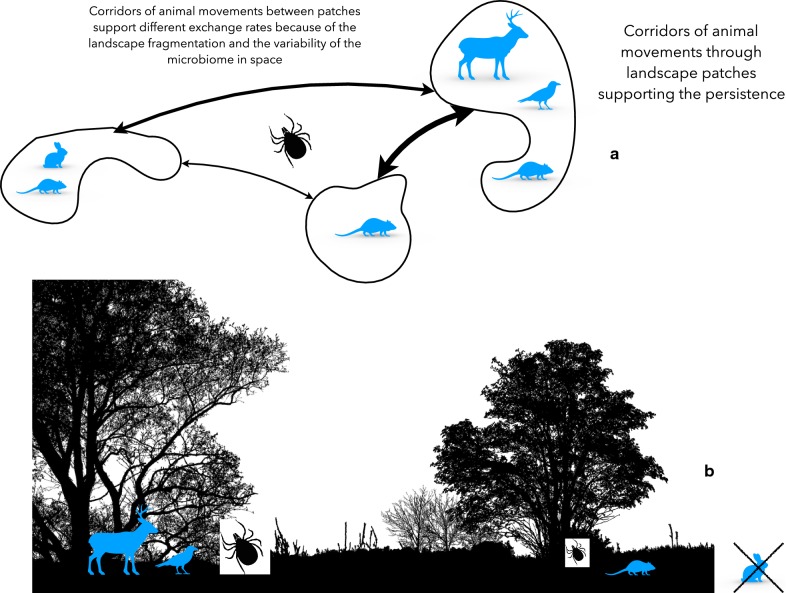Fig. 3.
The spatial scale as driver of variability in the tick microbiome. a The connectivity patterns of the landscape drive the presence/absence of some key hosts and exchange of animals among patches, shaping a variable host composition in each patch. Some patches may be highly connected (wide arrows) while others are poorly connected, blocking the movements of vertebrates. This adds a spatial component to the composition and the variability of the tick microbiome. b The vegetal composition of the habitat may differ and modulate the microclimate, shaping tick density. The figure intends to show a gradient of biomes, in which hosts may be abundant or scarce, or even absent. Ticks also have different survival and questing rates at the small scale of the habitat patch. Such intra-patch spatial diversity shapes an extra variability of the tick microbiome

